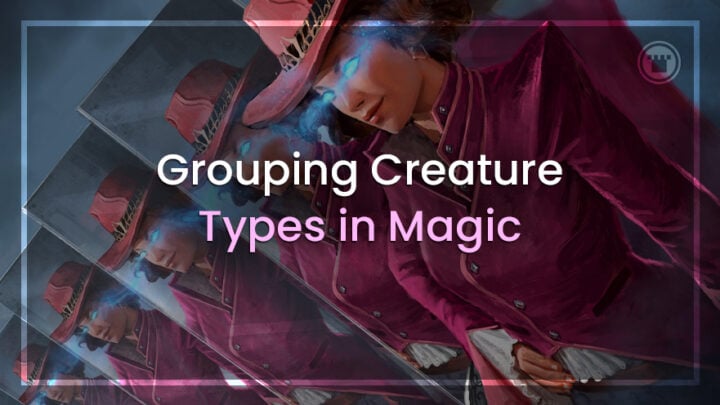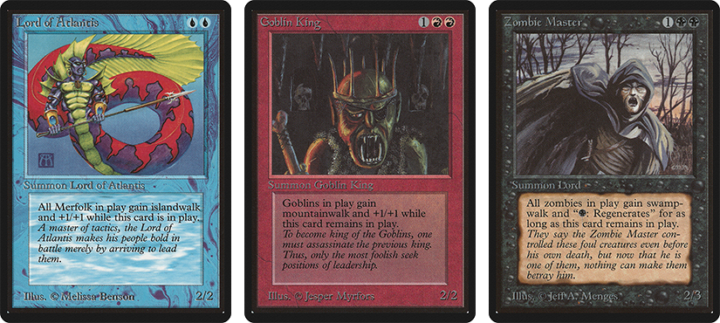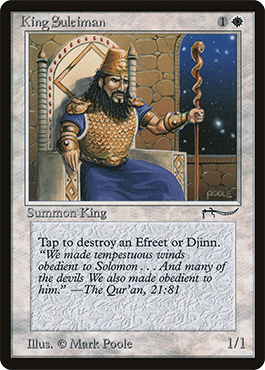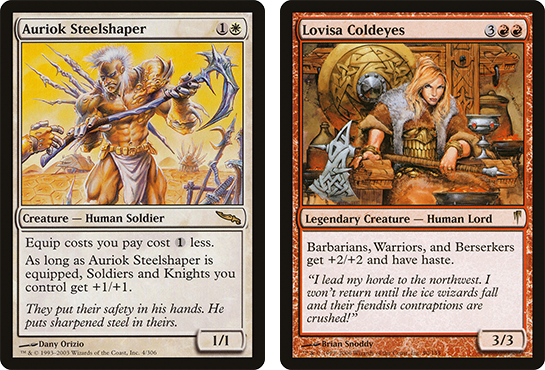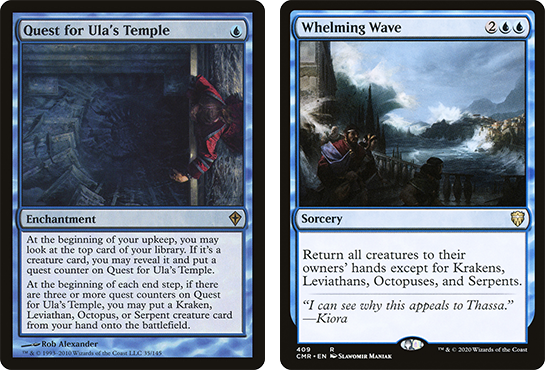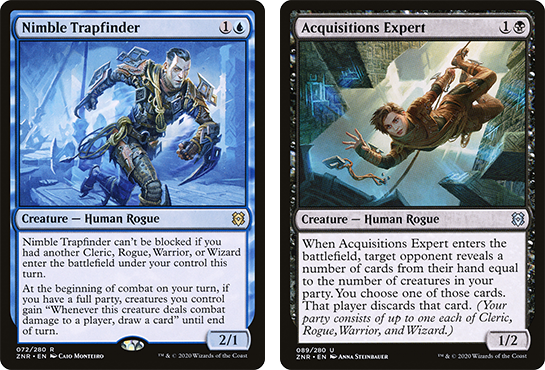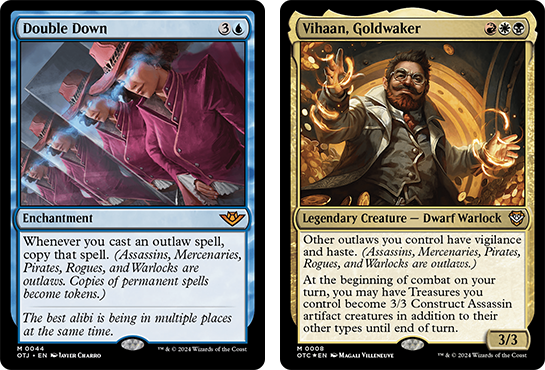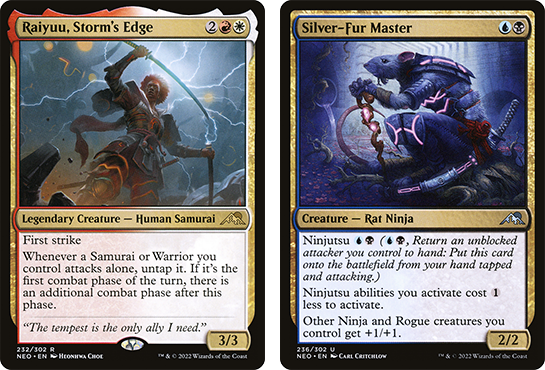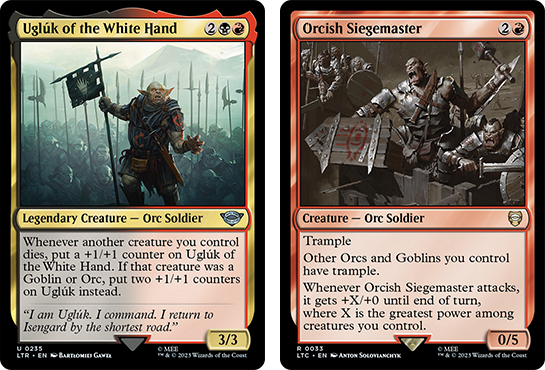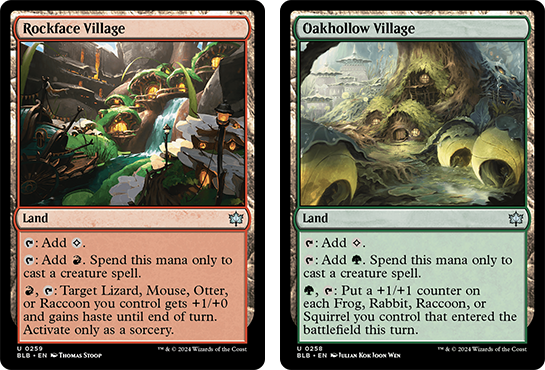Typal (formerly “tribal”) decks are very popular in all of Magic’s formats. These are strategies that revolve around playing a bunch of creatures with the same type alongside cards that give you bonuses for that creature type. Recently, cards that offer typal bonuses to more than one creature type have become more common. In this article, I’ll discuss the history of these creature type groupings and whether or not they are good for the game.
Typal payoffs are as old as the game of Magic, with Lord of Atlantis, Goblin King, and Zombie Master appearing in Limited Edition Alpha. Each of them offers a buff to your creatures with a single specific creature type. For the most part, creature type payoffs have followed this same model for the last 31 years.
However, at various times throughout Magic’s history, we’ve seen the use of what Wizards R&D calls “typal coupling.” This is when a card offers a typal bonus for two or more different creature types.
How Is Typal Coupling Used?
Cards referencing pairs or groups of creature types have appeared in Magic periodically dating all the way back to Magic’s first expansion – Arabian Nights. King Suleiman can destroy Efreets or Djinns. This is because in One Thousand And One Nights (the literary work that inspired Arabian Nights), King Suleiman imprisons and enslaves djinns and efreets.
In other words, the very first card to use typal coupling did so because of flavor. And this set a precedent, as flavor would go on to be one of the primary reasons that typal coupling is used.
However, many cards that group creature types together do so to prevent that card from being too narrow. If a creature type is new and/or relatively undersupported, but you want to design a card that supports that type.
Early examples of this include Auriok Steelshaper and Lovisa Coldeyes. Before the release of Lorwyn in 2007, “class” creature types were far from common. So when both of these were printed, they were offering support for creature types with very few cards. In order to make both of them playable, they offer buffs to more than one of these “class” creature types.
There are also some instances where typal coupling is used for flavor and gameplay reasons. I think the most notable example of this is the four “Sea Monster” creature types that were first referenced on Quest for Ula’s Temple – Kraken, Leviathan, Octopus, and Serpent. Even today there aren’t that many creatures that have one of these four types, and there were even fewer in 2010.
However, because creatures with those types are so massive, you can also design flavorful cards like Whelming Wave. It bounces absolutely everything except for the largest sea creatures around.
While typal coupling has occasionally been a feature on individual Magic cards for a very long time, we’ve only started to see it as a set-wide phenomenon over the last few years. And we’ve seen it used for both flavor and gameplay reasons.
Keyworded Typal Coupling
2020’s Zendikar Rising is the first set when they began really exploring this design space. That set’s “Party” mechanic was one of the headliners of the set. This mechanic was meant to reference Dungeons & Dragons and other games where you have a party with creatures that have different classes. So, it grouped Cleric, Rogues, Warriors, and Wizards together. Cards with party became better for each of those types you controlled. As with sea monsters, this worked in terms of flavor and gameplay.
The most recent example of typal coupling also uses a keyword. Outlaws of Thunder Junction’s “Outlaw” mechanic groups together Assassins, Mercenaries, Pirates, Rogues, and Warlocks. In other words, creature types that imply that an individual commits crime. This was very flavorful for a “Wild West” set, but it also gives you more bonuses for building a deck around only one of those types.
Grouping Closely Related Types Together
Kamigawa: Neon Dynasty also made heavy use of typal coupling. Several cards in the set groups Ninjas and Rogues or Samurais and Warriors together. Grouping those two pairs together was done more for gameplay reasons than anything. Most of the game’s Samurais and Ninjas only appear in Kamigawa sets, while Rogues and Warriors appear in every single set. And what are Samurais and Ninjas but set-specific versions of Warriors and Rogues? Having cards that benefited those relatively scarce creature types wouldn’t have had as big of an impact on Magic as the whole.
Similarly, Orcs and Goblins were grouped together in Lord of the Rings: Tales of Middle Earth. This is a change that makes sense in terms of flavor, since Saruman and Sauron’s armies contain both Goblins and Orcs. However, Orcs aren’t a widely supported creature type while Goblins are, so it makes this cards substantially stronger.
We’ve got more typal coupling in our future too. There’s a cycle of lands in the upcoming Bloomburrow that each offer bonuses for four separate animal creature types. As I’m writing this, it’s unclear whether or not Bloomburrow will heavily feature creature type groupings, or if the aforementioned “Village” cycle is all we’ll see. But there’s a pretty good chance we’ll see it on some more cards in Bloomburrow and in other future sets. Typal coupling is simply the norm now.
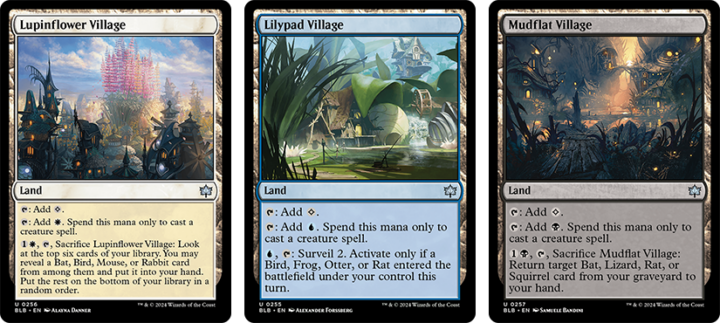
Creature Type Updates as Typal Coupling
There’s also been a recent push by Wizards of the Coast to reduce the number of creature types, especially when it comes to anthropomorphic animals. In a way, this also functions as typal coupling, as it expands the number of cards that can benefit from a particular typal payoff.
Here are examples of these changes over the last year:
- All Cephalids became Octopuses
- All Viashinos became Lizards
- All Nagas became Snakes
Cephalids, Viashinos, and Nagas are all types that never received any sort of typal support, but now that they’ve taken on new creature types they have simultaneously gained access to new support while expanding the number of creatures with their new typing.
Is Typal Coupling Good for Magic?
Typal coupling allows for great flavor and more synergistic gameplay, making cards far more viable than they would be without it. It’s especially a boon for EDH players, as it makes it easier to build typal decks when you have so many cards that benefit more than one creature type.
However, there are two clear downsides to typal coupling, especially if it becomes too widespread.
First, there’s a risk of making things too homogenous. If every creature type starts frequently being batched together using typal coupling, the things that make a specific creature type unique will fall by the wayside. While I hope they’re not going to take things that far, that is a serious risk that they are incurring every single time they create a new typal grouping.
Second, there’s a power level issue. Typal decks are already incredibly powerful in multiple formats thanks to all of their synergy. By broadening the number of creature types that can benefit from typal payoffs, you’re running the risk of making those types of decks even better, because they can now gain access to cards with other creature types.
Overall, I do think that typal coupling is a good thing for Magic. However, I think it would be safer for Wizards of the Coast to use it a little more sparingly than they have of late.
End Step
What do you think, is typal coupling good for the game? Let me know over on X.

Jacob has been playing Magic for the better part of 24 years, and he especially loves playing Magic’s Limited formats. He also holds a PhD in history from the University of Oklahoma. In 2015, he started his YouTube channel, “Nizzahon Magic,” where he combines his interests with many videos covering Magic’s competitive history. When he’s not playing Magic or making Magic content, he can be found teaching college-level history courses or caring for a menagerie of pets with his wife.

